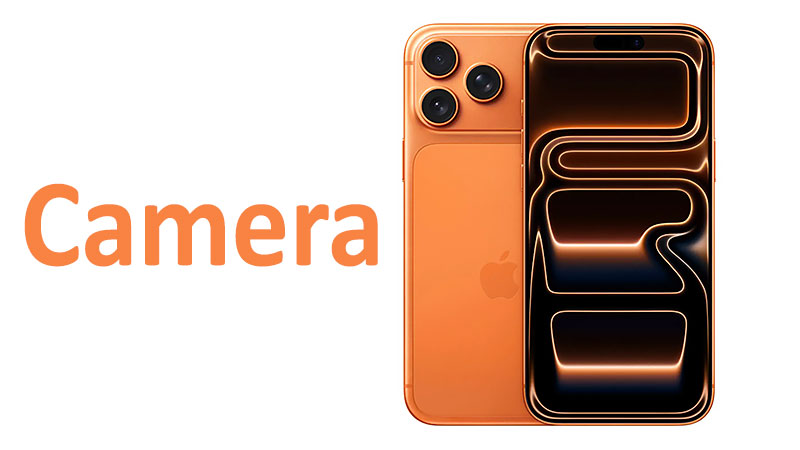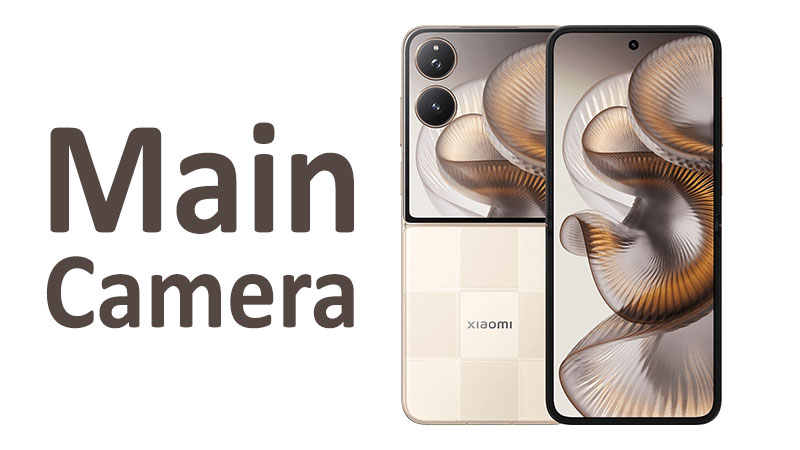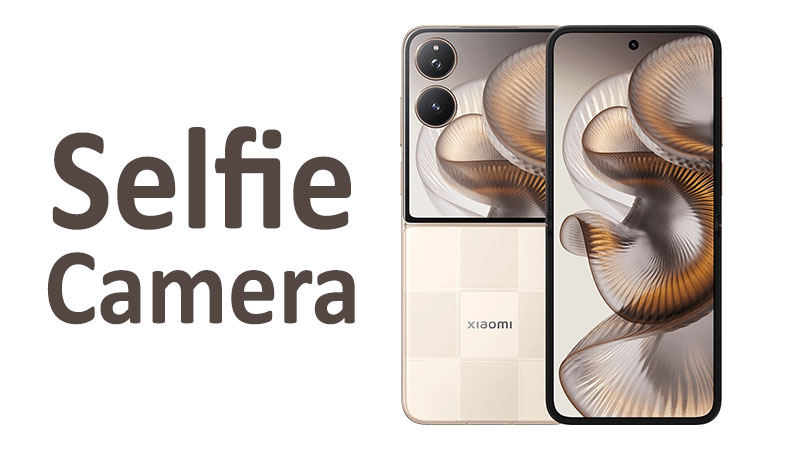The Apple iPhone 17 Pro Max Camera defines the next generation of mobile photography. It promises a massive leap in image and video capture quality. Apple engineers focused on professional-grade hardware and software integration. This comprehensive review examines the detailed specifications, analyzes real-world performance, and compares it to the competition. We explore whether this flagship model truly earns its “Pro Max” title in the camera department.
The Core Specifications Breakdown
Apple completely overhauled the camera architecture for the iPhone 17 Pro Max. The system is built around three powerful 48-megapixel sensors. This consistency across the wide, telephoto, and ultrawide lenses is a major advantage. It ensures uniform image quality and color science across all focal lengths. A dedicated LiDAR scanner enhances depth and focus capabilities.
The Main Wide Sensor: The 48 MP Powerhouse
The primary wide-angle lens remains the foundation of the system. It features a high-resolution 48 MP sensor. The wide aperture is set at f/1.6, allowing generous light intake. This design is crucial for outstanding low-light performance.
The sensor size is 1/1.28′′. Its individual pixel size is 1.22μm. These physical dimensions allow for superior light gathering. Dual pixel PDAF (Phase Detection Autofocus) ensures instantaneous focusing. Furthermore, Apple includes advanced sensor-shift OIS (Optical Image Stabilization). This stabilization system helps users capture tack-sharp photos, even when handheld.
Comparison: The increased sensor size offers a noticeable jump over the previous generation. Competitors often rely on software, but Apple’s physical sensor improvement provides a superior starting point for computational photography. This combination makes the main camera a versatile performer in almost any lighting condition.
The Periscope Telephoto Lens: Reaching Further
One of the most anticipated features is the new periscope telephoto lens. This lens provides a true 4x optical zoom capability. It achieves a 100mm equivalent focal length. This focal length is perfect for portraits and detailed wildlife shots.
This telephoto camera also utilizes a 48 MP sensor. Its aperture is f/2.8. The sensor measures 1/2.55′′ with a 0.7μm pixel size. Most significantly, it features 3D sensor-shift OIS. This advanced stabilization is necessary for eliminating shake at the 4x zoom level. It dramatically improves the quality of distant shots.
Comparison: Older Pro Max models typically stopped at 3x or 5x optical zoom with less resolution. The new 4x, 100mm lens directly rivals long-zoom flagship Android devices. This addition finally gives the iPhone a powerful, native mid-range zoom option for professional use.
The Ultrawide Lens: Expansive Views
The ultrawide lens has also been upgraded to a 48 MP sensor. It provides a massive 120∘ field of view. The equivalent focal length is a super-wide 13mm. This is ideal for architecture, landscape photography, and creative perspectives.
The aperture is f/2.2. Like the telephoto, its sensor size is 1/2.55′′. The pixel size is 0.7μm. The lens includes PDAF for accurate focus across the wide frame. This autofocus capability allows the ultrawide lens to double as a powerful macro camera.
Comparison: The previous ultrawide sensors often had lower resolution. The 48 MP upgrade means detailed ultrawide shots. Users can now crop into ultrawide photos without losing significant detail. This brings parity and consistency to the entire rear camera array.
The TOF 3D LiDAR Scanner: Depth and Speed
Apple retains and enhances the TOF 3D LiDAR scanner. LiDAR is not a traditional camera lens. Instead, it measures distance and depth with high accuracy. This is crucial for several performance aspects.
LiDAR dramatically improves autofocus speed, especially in poor lighting. It also enables accurate depth mapping for Portrait Mode. Furthermore, it unlocks new possibilities for augmented reality (AR) applications. This scanner is key to computational photography enhancements.
Advanced Performance: Image Quality Review
The iPhone 17 Pro Max camera performance extends beyond raw megapixels. It relies heavily on Apple’s sophisticated image processing pipeline. The high-resolution sensors combined with optimized software deliver stunning results.
Daylight Photography: Detail and Dynamics
In bright daylight, the camera delivers impeccable image quality. All three lenses capture extreme levels of detail. The color rendition is accurate and pleasingly vibrant. Apple avoids over-saturation, maintaining a natural look.
The dynamic range is exceptional. The camera expertly handles scenes with harsh contrast. Bright highlights retain detail. Deep shadows show texture and subtle tones. This results in professional-looking images straight from the camera.
Buyer Insight: Users can expect museum-quality prints from the native 48 MP files. However, Apple typically uses pixel binning for a standard 12 MP output. This technique maximizes light capture. The full 48 MP resolution is available when shooting in ProRes RAW or a similar mode.
Low-Light and Night Mode Performance
Low-light performance is a signature strength of this new system. The large 1/1.28′′ main sensor gathers a huge amount of light. This reduces the reliance on extended Night Mode processing. Images show significantly less noise than older models.
The faster f/1.6 aperture helps freeze motion in dark settings. Detail remains high, even in areas of deep shadow. Computational photography algorithms seamlessly stitch multiple exposures. The final images maintain a natural sense of atmosphere.
Portrait Mode and Depth Control
Portrait Mode utilizes the 100mm telephoto lens for a flattering perspective. This focal length minimizes facial distortion. The combination of the camera and the LiDAR scanner creates perfect subject separation.
The resulting bokeh effect is realistic and beautiful. Users can precisely adjust the depth-of-field after capture. This flexibility makes the iPhone 17 Pro Max an excellent tool for professional portrait photographers.
Video Capabilities: A Filmmaker’s Tool
Apple consistently leads the industry in mobile video capabilities. The iPhone 17 Pro Max further expands this lead. It offers a suite of professional features previously found only on dedicated cinema cameras.
Frame Rate and Resolution Versatility
The video specs are truly exhaustive. The phone captures 4K video at numerous frame rates. These rates include 24, 25, 30, 60, 100, and 120 frames per second. High-speed 1080p recording is available up to 240fps. This provides extreme slow-motion capability.
This range of frame rates provides immense creative control. Filmmakers can choose the classic cinematic look of 24fps. They can also use 100fps or 120fps for detailed slow-motion playback. The versatility is unmatched in a smartphone form factor.
Professional Codecs and Color Depth
The iPhone supports 10-bit HDR video recording. This feature captures a billion shades of color. It drastically improves color fidelity and reduces banding. The inclusion of Dolby Vision HDR elevates contrast and brightness. This is supported up to 60fps.
For advanced users, ProRes and ProRes RAW video formats are available. These codecs preserve maximum image data. They provide unparalleled quality for post-production editing. The new Apple Log 2 profile expands the dynamic range even further. This is a game-changer for serious color grading.
The Era of Spatial Video
A groundbreaking feature is the 3D (spatial) video and audio capture. The iPhone 17 Pro Max records depth information alongside the video. This creates immersive, three-dimensional content. This content is specifically designed for Apple’s mixed-reality headsets.
Spatial video enables users to relive moments with incredible depth. The camera also captures spatial audio. This ensures a truly immersive playback experience. This feature positions the phone at the forefront of the new computing platform.
The Front-Facing Camera System
The selfie camera receives a significant and necessary upgrade. It moves past the typical 12 MP sensor. The iPhone 17 Pro Max features an 18 MP multi-aspect front camera. This gives users greater flexibility in cropping and framing.
Specs and Performance of the Selfie Camera
The front lens has an f/1.9 aperture. It includes PDAF for fast and accurate self-focusing. Crucially, the selfie camera now incorporates OIS (Optical Image Stabilization). This is a major improvement for video calls and vlogging.
It also features an SL 3D sensor for depth and biometrics. This is essential for secure Face ID authentication. The front camera supports HDR and Dolby Vision HDR video capture. It also supports ProRes RAW and Apple Log 2, mirroring the rear system’s professional features.
Advanced Selfie Video
Selfie video quality is superb. It supports 4K recording up to 60fps. The new gyro-EIS (Electronic Image Stabilization) keeps video footage smooth. The ability to shoot ProRes RAW and Log 2 on the front camera is revolutionary. Content creators now have professional control over their vlogs and self-recorded content.
Specialized Comparisons and Competitive Analysis
The iPhone 17 Pro Max camera competes directly with other top-tier flagships. Its strengths lie in consistency, video quality, and software integration.
iPhone 17 Pro Max vs. Previous Generation (iPhone 16 Pro Max)
The jump from the iPhone 16 Pro Max is substantial. The previous model lacked the 48 MP consistency across all lenses. It did not have the 100mm periscope zoom. The new 3D spatial video feature is also a novel addition. Users upgrading from the 16 Pro Max will see huge improvements in zoom reach, low-light detail, and video workflow.
iPhone 17 Pro Max vs. Android Flagships (e.g., Samsung Galaxy S Ultra)
Android rivals often boast 10x or even 100x digital zoom capabilities. They use larger pixel counts on the main sensor. The iPhone 17 Pro Max takes a different, quality-focused approach. Its 4x optical zoom is extremely sharp and reliable. The video quality, especially the ProRes and Log 2 workflow, is widely considered superior for professional filmmaking. Apple’s integrated chip processing also gives it an edge in computational photography speed.
Computational Photography Edge
Apple’s strength is the seamless integration of hardware and silicon. The custom processor enables functions like Photonic Engine. This process applies deep merging and optimization to images. This ensures every photo benefits from multi-frame processing. The results are incredibly detailed, even in challenging conditions.
Pros and Cons for the Professional Buyer
Understanding the strengths and weaknesses is vital for any purchase. The iPhone 17 Pro Max offers professional tools in a compact body.
Advantages (Pros)
| Feature | Benefit |
|---|---|
| Triple 48 MP Sensors | Provides consistent quality and color across all lenses. |
| 4x Periscope Telephoto | Offers true 100mm focal length for professional portraits and reach. |
| ProRes RAW & Apple Log 2 | Delivers maximum dynamic range for color grading in post-production. |
| 3D Spatial Video Capture | Future-proofs content for mixed-reality viewing experiences. |
| OIS on Selfie Camera | Vastly improves stability for vlogging and handheld front-facing video. |
| LiDAR Integration | Ensures faster focus and more accurate depth mapping in all modes. |
Disadvantages (Cons)
| Feature | Concern |
|---|---|
| 4x Optical Zoom Limit | Competitors may offer longer optical zoom (e.g., 5x or 10x). |
| Large File Sizes | ProRes and Apple Log 2 generate massive video files. This requires large storage capacity. |
| High Cost | The professional features come with a premium price tag. |
| Requires Post-Processing | Full benefit of Log 2 and ProRes RAW requires advanced editing knowledge. |
Key Considerations for Buyers
Prospective buyers must weigh their needs against the camera’s capabilities. This camera is built for creators and enthusiasts.
Storage Capacity is Paramount
The ability to shoot ProRes RAW and Apple Log 2 is incredible. However, these files are enormous. Users planning to shoot extensive video must choose a high-capacity storage model. A 256GB base model will quickly fill up with just a few minutes of professional-grade footage. Opting for 512GB or 1TB is a sensible investment for videographers.
Understanding Apple Log 2
Apple Log 2 provides the flattest possible image profile. This retains maximum highlight and shadow detail. It requires color grading in editing software. Beginners may find the initial footage looks dull or washed out. Users must understand this professional workflow to realize the quality benefits.
The Value of 3D Spatial Video
The investment in the iPhone 17 Pro Max is also an investment in the future of content. The 3D video capability is currently niche. It will become increasingly important as mixed-reality adoption grows. Buyers should consider if they plan to embrace this immersive technology early.
Computational Limitations
While excellent, computational photography can sometimes create an overly processed look. This is most noticeable in extreme low-light situations. Users seeking a purely “analog” look should stick to shooting in the RAW formats. This gives them full control over noise reduction and sharpening.
Conclusion: Is the iPhone 17 Pro Max Camera Worth the Investment?
The Apple iPhone 17 Pro Max camera is a significant technological achievement. It merges professional cinema features with smartphone convenience. The consistent 48 MP sensors provide excellent flexibility and quality. The addition of the 100mm periscope zoom addresses a long-standing criticism. Spatial video is a compelling look into the future of media consumption.
For the average user, this camera offers superb point-and-shoot reliability. The enhanced low-light performance is instantly noticeable. For the professional content creator, the Apple Log 2, ProRes RAW, and 4K@120fps options make it a powerful B-cam or primary shooter. If you demand the highest quality mobile video and image consistency, this flagship justifies its premium price. This device sets the bar for what a smartphone camera can achieve in the modern era.
FAQ
Does the iPhone 17 Pro Max camera support true 8K video recording?
No, the iPhone 17 Pro Max primarily focuses on 4K resolution. It maximizes quality up to 4K at 120fps, prioritizing frame rate and codec quality over the higher 8K pixel count.
What is Apple Log 2 and who should use it?
Apple Log 2 is a video profile that captures footage with a flat, desaturated look. It maximizes dynamic range. Professional editors and colorists should use it for maximum flexibility in post-production.
How does the 4x optical zoom compare to digital zoom?
Optical zoom uses physical glass movement to magnify the image without loss of quality. Digital zoom simply crops the image. The 4x optical zoom on the iPhone 17 Pro Max provides far superior sharpness and detail.
Is the OIS on the main camera improved over the iPhone 16?
Yes, the iPhone 17 Pro Max uses a more advanced sensor-shift OIS system. It now includes a 3D sensor-shift mechanism on the telephoto lens, providing superior stabilization across the entire camera module.
Can I edit 3D spatial video directly on the phone?
Yes, you can record and perform basic edits of 3D spatial video directly on the phone. However, full appreciation and advanced editing often require a dedicated mixed-reality headset or specialized software.



